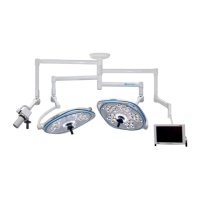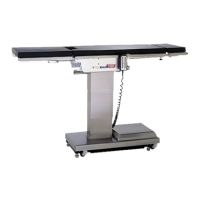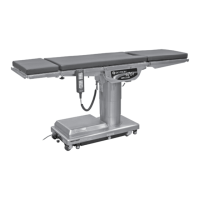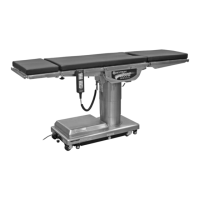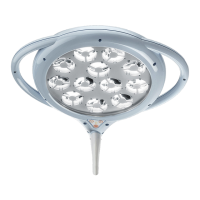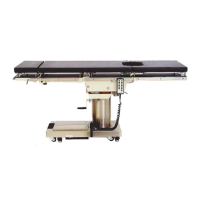Page 17
Figure 18.
Beyond the focal point, the light beams spread out
like an inverted cone and will more evenly spread
the light throughout the bell-shaped cavity.
Other Illumination Considerations
Close attention to surgical light intensity during the
case as well as good quality general illumination in
the room will help to minimize eye fatigue of surgical
personnel.
Dark surgical drapes will help to reduce reflec-
tance. White drapes should be avoided at all times
because of high reflectance.
The use of matte and satin finish instruments and
retractors also helps to reduce eye fatigue.
Bell-Shaped Cavities
For most surgical procedures the lighthead will be
properly focused with all the light beams converged
in one spot at the bottom of the surgical cavity.
However, in the case of a bell-shaped cavity (for
example - total abdominal hysterectomy on an
obese patient), focusing at the bottom of the cavity
may cause more shadow problems. The focal
point for the light beams should be above the
bottom of the cavity. See figure 18.
Triple Lighthead Positioning
Triple lighthead systems will either consist of a
large diameter lighthead with two 24" satellites or
three 24" lightheads. There are two basic position-
ing strategies that can be used to obtain the best
illumination possible. The first is to align all three
lightheads to the centerline of the table with the
large lighthead directly over the center of the surgi-
cal site. The second is to cluster the lights in a
circular arrangement over the surgical site with
each lighthead about 120° away from each other.
The whole cluster should be positioned to minimize
interference with the head and shoulders of the
surgical staff. See figure 17.
Figure 17.
When an angled cavity is to be illuminated, at least
one of the lightheads should be positioned to be
perpendicular to the bottom of the cavity.
For head and perineal work, the lights should be
positioned as they would for a dual system but with
a satellite on each side of the surgeon.
120˚
30˚
30˚
30˚
120˚
120˚
LIGHT
BEAMS
FOCAL
POINT
BELL SHAPED
CAVITY

